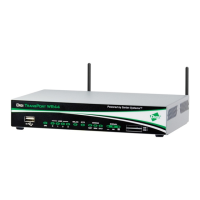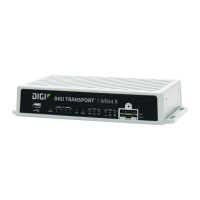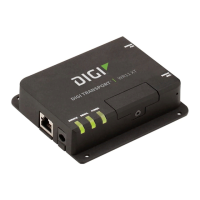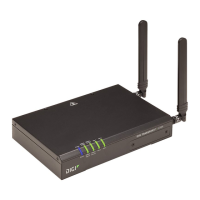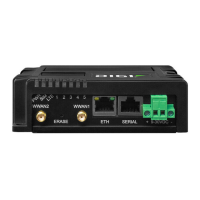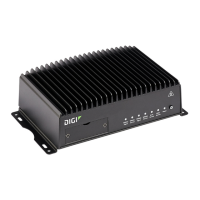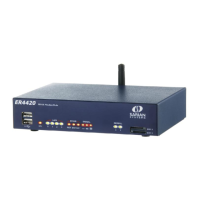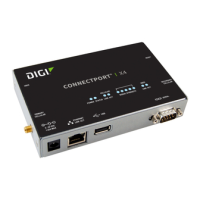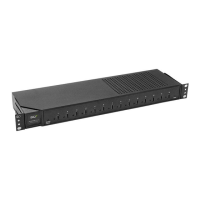Configuring Virtual Private Networking (VPN) Configure Internet Protocol security (IPsec)
Digi TransPort® Routers User Guide
487
Configure IPsec tunnel default action
Like a normal IP routing set-up, IPSec Tunnels have a default configuration that is applied if no specific
tunnel can be found. This is useful when, for example, you want to have a number of remote users
connect via a secure channel, for example, to access company financial information, but also still allow
general remote access to other specific servers on your network or the Internet.
ÉWeb
1. Go to Configuration > Network > Virtual Private Networking > IPsec Tunnels >IPsec
Default Action.
2. Configure the IPsec tunnel default action parameters:
When a packet is received which does not match any IPsec tunnel
How the router responds if a packet is received when there is no SA.
n Drop the packet: Routes only packets that match a specified IPsec tunnel and discards
all other data. This has the effect of enforcing a secure connection to all devices behind
the router.
n Pass the packet: Decrypts and authenticates all packets that match an IPsec tunnel,
depending on the IPsec tunnel’s configuration. Data that does not match is also allowed
to pass.
When a packet is to be transmitted which does not match any IPsec tunnel
How the router will respond if a packet is transmitted when there is no SA.
n Drop the packet: Routes only packets that match a specified IPsec tunnel and discards
all other data.
n IPass the packet: Decrypts and authenticates all packets that match an IPsec tunnel,
depending on the IPsec tunnel’s configuration. Data that does not match is also allowed
to pass.
3. Click Apply.
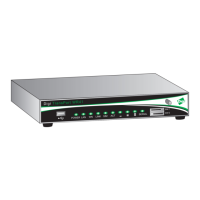
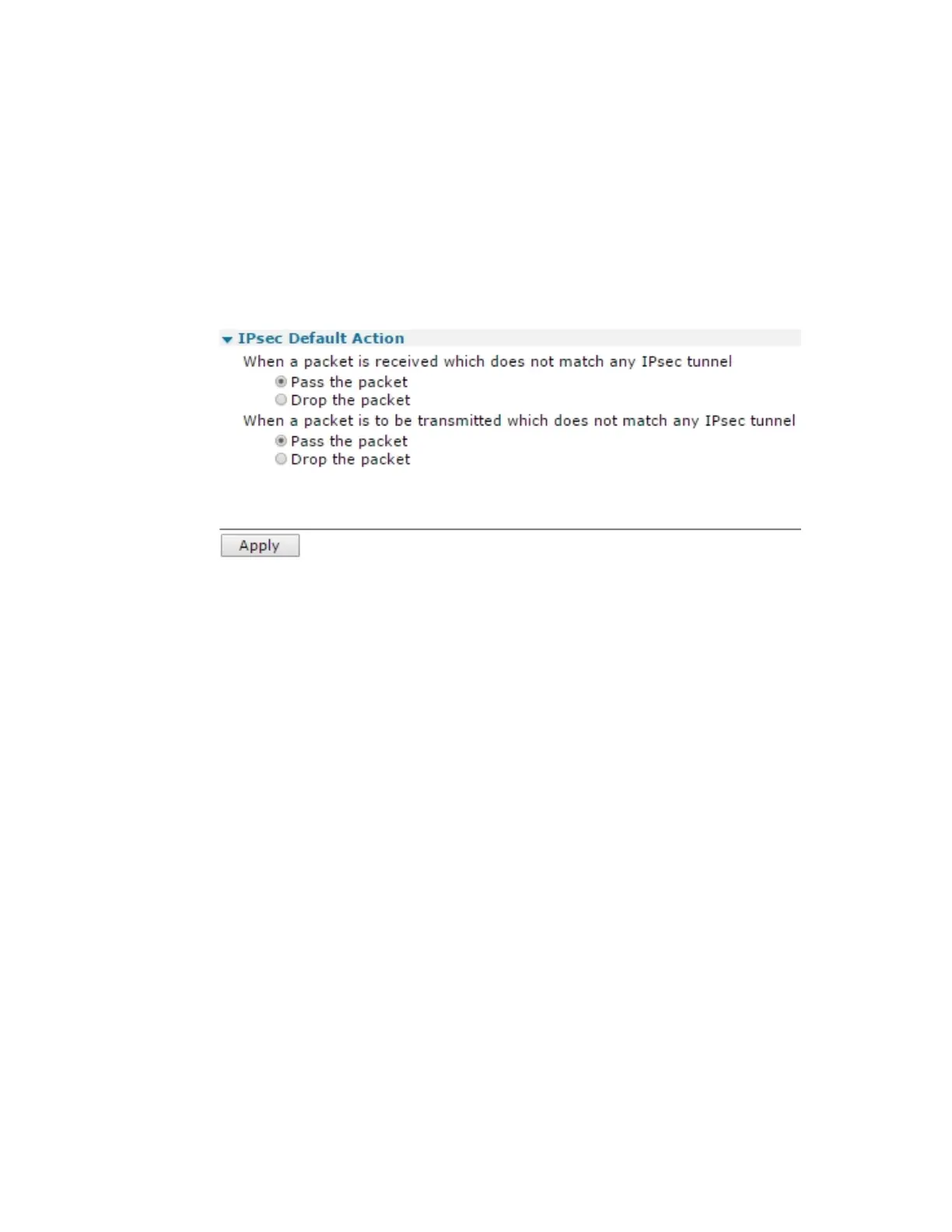